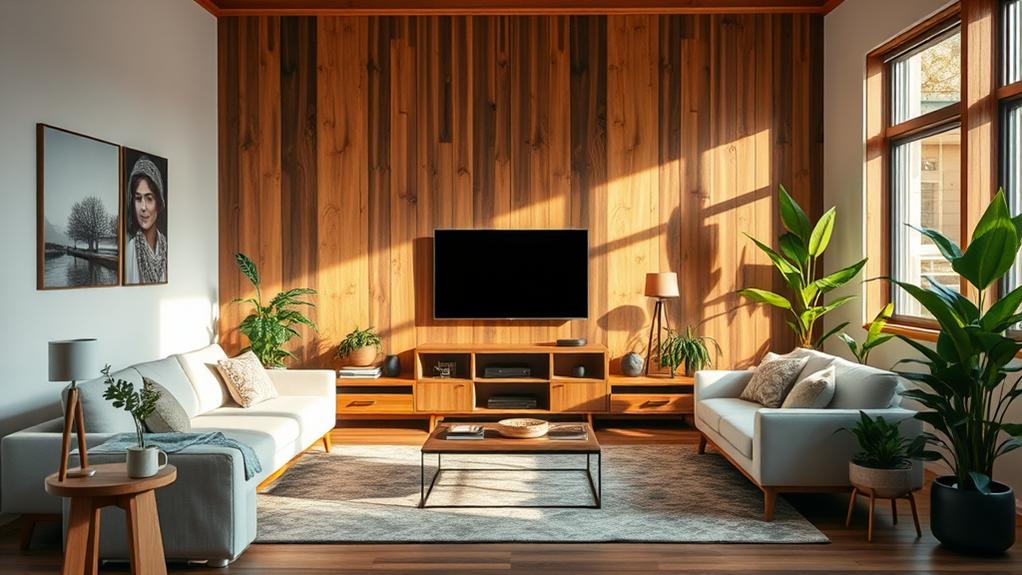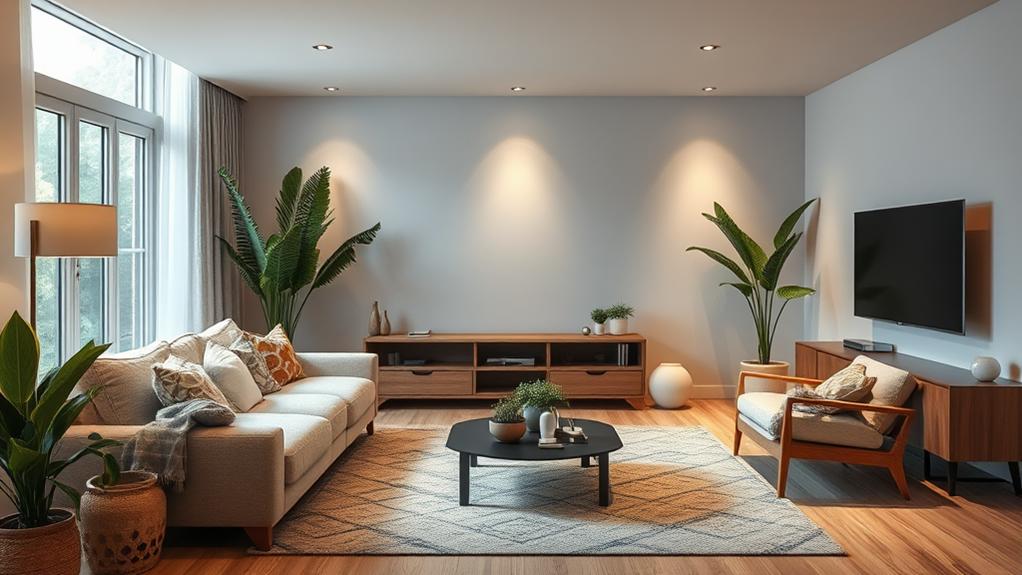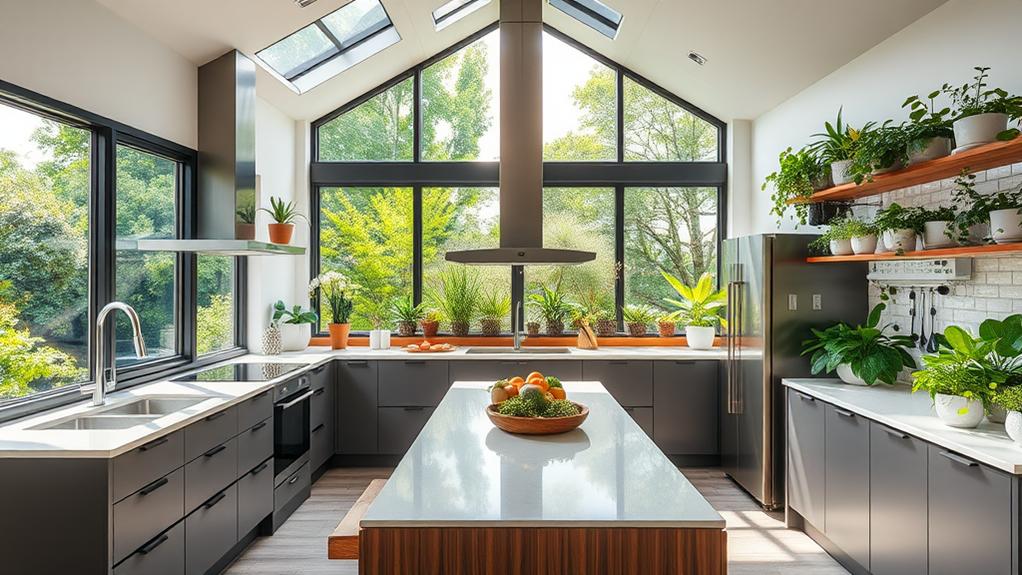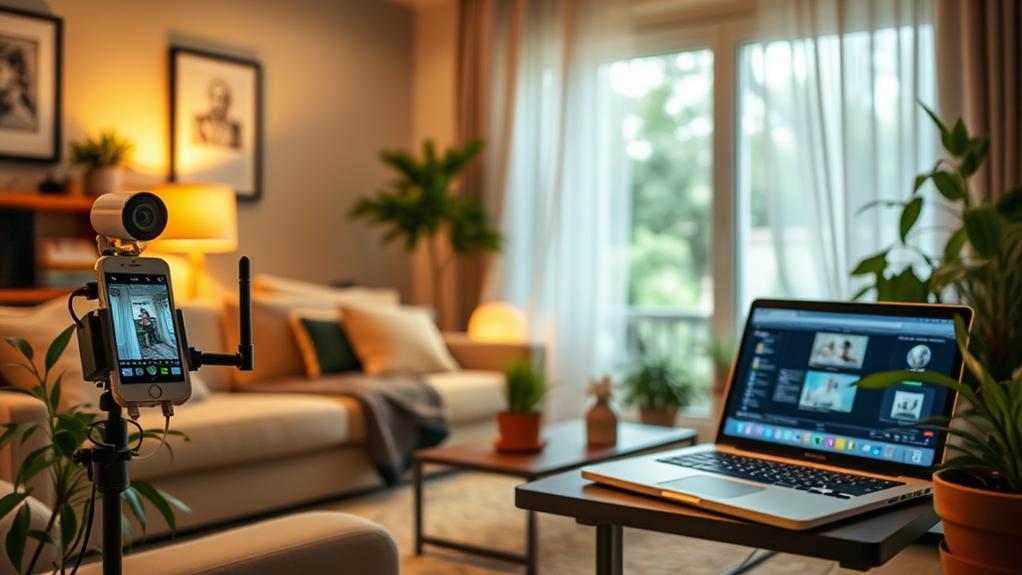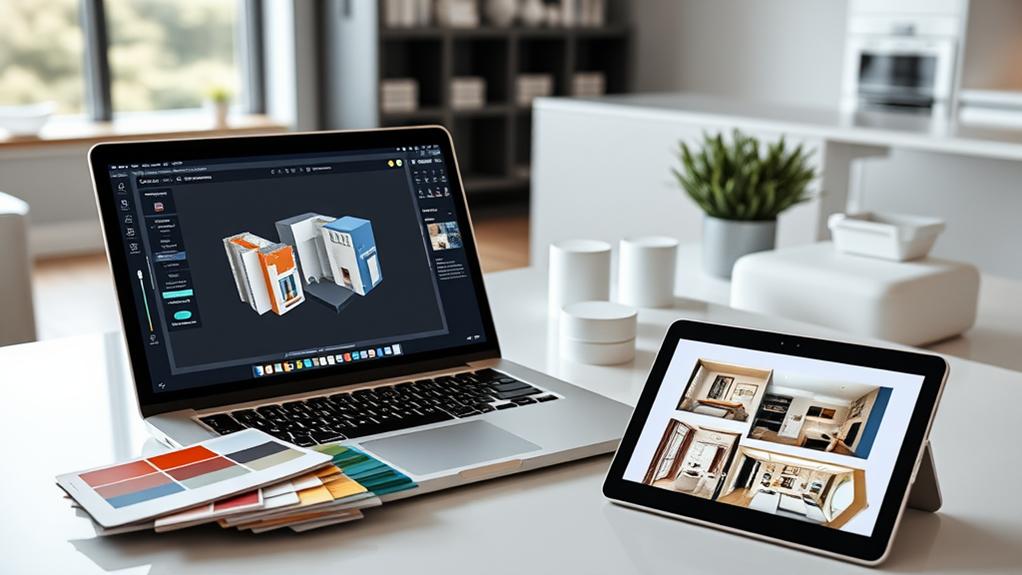When you think about tech-infused homes, consider how mindful design principles can transform your living space into a sanctuary that nurtures well-being. Imagine a home where smart technology seamlessly enhances your comfort while prioritizing aesthetics and sustainability. It's not just about convenience; it's about creating an environment that resonates with your lifestyle. As you explore the balance between functionality and tranquility, you might find surprising elements that redefine modern living. What if your home could evolve with your needs, making every moment more intentional?
Understanding Mindful Design
Mindful design is all about creating spaces that resonate with your lifestyle and well-being. It encourages you to think critically about how your environment impacts your daily life. When you embrace mindful design, you focus on functionality, comfort, and aesthetics, ensuring that every element serves a purpose.
You start by evaluating your needs and preferences, which allows you to craft spaces that reflect your personality and promote a sense of tranquility.
To achieve this, consider the flow of your space. You want to create areas that feel inviting and harmonious, allowing for easy movement and interaction. Use natural light to your advantage, enhancing the mood and energy of each room.
Select colors and materials that evoke positive emotions; for instance, soft blues and greens can foster calmness, while warm yellows can energize your space.
Incorporating elements of nature, like plants or natural textures, can further enhance the connection to your environment.
Remember, mindful design isn't just about aesthetics; it's about nurturing your well-being and fostering an atmosphere where you truly feel at home.
Benefits of Tech Integration
When you integrate technology into your home, you not only enhance convenience but also improve your overall quality of life. Smart devices streamline daily tasks, making it easier for you to manage your schedule and household chores.
Imagine controlling your lights, thermostat, and appliances all from your smartphone or voice commands. This saves time and energy, allowing you to focus on what truly matters.
Additionally, tech integration boosts your home's security. With smart cameras, alarm systems, and door locks, you can monitor your property in real-time and receive alerts about any unusual activity.
This peace of mind helps you feel more secure in your environment.
Moreover, energy efficiency is another significant benefit. Smart thermostats and energy monitors can help you reduce utility bills by optimizing your energy consumption based on your habits.
This not only saves you money but also contributes to a more sustainable lifestyle.
Balancing Aesthetics and Function
Balancing aesthetics and function in tech-infused homes is essential for creating spaces that are both visually appealing and practical. You want your home to reflect your style while also serving your daily needs.
Start by selecting technology that complements your design vision. Smart lighting, for instance, can enhance the ambiance without compromising on style.
Consider furniture that combines form and function. Pieces with built-in storage can declutter your space while still looking chic.
When you're choosing colors and materials, aim for a cohesive palette that ties everything together, ensuring that tech elements blend seamlessly into the overall design.
Don't forget about spatial organization. Open layouts can promote flow, but you should also use tech to create distinct areas. Smart dividers or adjustable lighting can help define spaces without sacrificing aesthetics.
Lastly, remember that usability should always come first. If a tech feature disrupts the visual harmony of a room, it's worth reevaluating.
Sustainable Materials in Tech Homes
In today's eco-conscious world, your home can showcase sustainable materials while seamlessly integrating technology. By selecting eco-friendly options, you not only reduce your carbon footprint but also create a healthier living environment.
Consider using reclaimed wood for flooring or cabinetry. It adds character while minimizing deforestation. For countertops, choose recycled glass or bamboo, both durable and stylish. These materials not only look great but are also environmentally responsible.
Here's a quick comparison of sustainable materials to help you decide:
| Material | Benefits |
|---|---|
| Reclaimed Wood | Unique aesthetics, reduces waste |
| Bamboo | Fast-growing, highly renewable |
| Recycled Glass | Versatile, low maintenance |
| Cork | Natural insulation, water-resistant |
Incorporating these materials into your tech-infused home enhances its design while promoting sustainability. You can equip your space with energy-efficient appliances and smart technology that complements these eco-friendly choices. By making thoughtful selections, you'll create a harmonious blend of innovation and responsibility, ensuring your home is both stylish and sustainable. Embrace these options and take pride in your commitment to a greener future.
Smart Home Automation Essentials
Smart home automation transforms your living space into a convenient, connected environment that enhances your daily life. With just a few taps on your smartphone or simple voice commands, you can control various systems in your home, from lighting to climate control, making your routines smoother and more efficient.
To get started, focus on essentials like smart lighting. Smart bulbs let you adjust brightness and color to fit your mood or activity.
Next, consider a smart thermostat that learns your schedule and preferences, optimizing energy usage while keeping you comfortable.
Security is another vital element. Invest in smart cameras and doorbells that send real-time notifications, allowing you to monitor your home remotely. Smart locks can provide keyless entry, giving you peace of mind when you're away.
Lastly, integrate your devices using a central hub or app. This allows you to create customized automation routines, like having your lights dim and music play when you arrive home.
Creating Multi-Functional Spaces
Many homeowners are discovering the benefits of creating multi-functional spaces that adapt to their needs.
By embracing flexibility in design, you can maximize your living areas, making them suitable for various activities without compromising style or comfort.
Here are four key strategies to help you create these versatile spaces:
- Use Modular Furniture: Invest in pieces that can be rearranged easily or serve multiple purposes, like a sofa bed or nesting tables. This allows you to customize your space effortlessly.
- Incorporate Smart Technology: Use smart home devices to transform your environment. For instance, smart lighting can shift from bright work mode to soft relaxation mode at the touch of a button.
- Design with Zones: Create distinct areas within a single room. Use rugs or furniture placement to delineate spaces for work, relaxation, and dining, helping you focus on each activity.
- Choose Multi-Purpose Decor: Opt for decor that adds both visual appeal and functionality. For example, decorative shelves can hold books and display art while serving as a workspace.
Enhancing Wellness Through Design
Designing your home with wellness in mind can greatly impact your overall health and happiness. When you prioritize natural light, for instance, you'll boost your mood and energy levels. Large windows or skylights can flood your space with sunlight, helping regulate your circadian rhythm.
Incorporating biophilic design—like indoor plants or natural materials—fosters a connection to nature, reducing stress and promoting tranquility. Choose colors that evoke calmness, such as soft blues or greens, to create a serene atmosphere.
Ergonomics also plays a vital role in wellness. Use furniture that supports good posture, especially in workspaces. An adjustable desk can encourage movement and reduce strain during long hours of work.
Moreover, consider incorporating soundscapes or soft background music to enhance relaxation. Sound-absorbing materials, like rugs and curtains, can minimize noise pollution, creating a peaceful environment.
Lastly, guarantee your home's air quality is first-rate. Invest in air purifiers or choose low-VOC paints to keep your living space healthy.
Personalization in Tech Interiors
Creating a wellness-focused home naturally leads to the next step: personalizing your tech interiors. When you tailor your technology to reflect your lifestyle and preferences, you enhance your living space's comfort and functionality.
Personalization not only makes your home feel uniquely yours but also promotes a sense of serenity.
Here are four ways to personalize your tech interiors:
- Smart Lighting: Install smart bulbs that adjust color and intensity based on your mood or the time of day, creating an inviting atmosphere tailored to your needs.
- Customized Sound Systems: Use multi-room audio systems that allow you to play different genres or playlists in various areas, ensuring the ambiance aligns with your activities.
- Personalized Home Automation: Set up routines that align with your daily schedule, like adjusting the thermostat or locking doors automatically, making your home responsive to your lifestyle.
- Unique Design Elements: Incorporate tech that matches your aesthetic, from sleek smart mirrors to stylish charging stations, ensuring your tech complements your design vision.
Future Trends in Mindful Tech Design
Mindful tech design is rapidly evolving, embracing sustainability and user-centric features that enhance daily living.
As you look towards the future, expect to see smart homes integrating seamlessly with eco-friendly materials and energy-efficient systems. Imagine living spaces that automatically adjust lighting and temperature based on your preferences, promoting comfort while reducing energy consumption.
Wearable technology will also play a significant role, with devices that monitor your well-being and integrate with your home environment.
Picture a scenario where your wearable reminds you to take breaks, while your home optimizes its lighting and sound to create a calming atmosphere.
Accessibility will be another key trend. Designers are focusing on creating inclusive tech that caters to diverse needs, ensuring that everyone can enjoy the benefits of a smart home.
This might include voice-activated systems and customizable interfaces that adapt to individual preferences.
Conclusion
Incorporating mindful design into tech-infused homes not only boosts your comfort but also enhances your well-being. Imagine a home where automated lighting adjusts to your mood, and calming colors wrap your living space, creating a serene atmosphere. Take the example of a family who transformed their traditional house into a smart haven, featuring a multi-functional room that doubles as a workspace and relaxation zone, proving that thoughtful design can truly elevate your everyday living experience.







